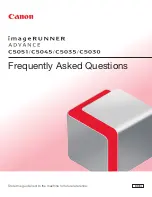
USER’S GUIDE
Appendix–57
■
Expanded Character Rotation
n = “a0” or “A1” Upright (default)
n = “a1” or “A1” Rotated 90 degrees
n = “a2” or “A2” Upside down, rotated 180 degrees
n = “a3” or “A3” Rotated 270 degrees
■
Bar Code Data Start
n = “b” or “B”
Data that follows “b” or “B” is read in as bar code data. Bar code data
must end with the “ \ ” code (5CH), which also terminates this
command. The acceptable bar code data is subject to the bar code
mode selected by “t” or “T”.
• When CODE 39 is selected with the parameter “t0” or “T0”:
Forty three characters “0” to “9”, “A” to “Z”, “-”, “ . ”, “ (space)”,
“$”, “ / ”, “+”, and “%” can be accepted as bar code data. Other
characters cause data error. The number of characters for bar codes is
not limited. The bar code data automatically starts and ends with an
asterisk “ * ” (start character and stop character). If the received data
has an asterisk “ * ” at its beginning or end, the asterisk is regarded as
a start character or stop character.
• When Interleaved 2 of 5 is selected with the parameter “t1” or “T1”:
Ten numerical characters “0” to “9” can be accepted as bar code data.
Other characters cause data error. The number of characters for bar
codes is not limited. Since this mode of bar codes require even
characters, if the bar code data has odd characters, the zero character
“0” is automatically added to the end of the bar code data.
• When FIM (US-Post Net) is selected with the parameter “t3” or “T3”:
Characters “A” to “D” are valid and 1 digit of data can be printed.
Uppercase and lowercase alphabet characters can be accepted.
• When Post Net (US-Post Net) is selected with the parameter “t4” or
“T4”:
Characters “0” to “9” can be data and it must be terminated by a check
digit. “?” can be used in place of the check digit.








































